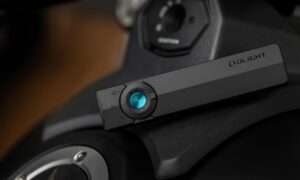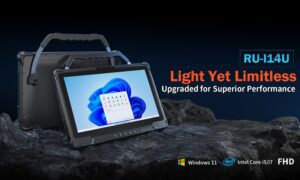What Is Gallbladder Removal?
Gallbladder removal, known medically as a cholecystectomy, is a common surgical procedure. It involves taking out the gallbladder, a small organ tucked under your liver. This organ’s main job is to store bile, which helps break down fats during digestion. When problems arise with the gallbladder, removing it is often the best solution.
Brisbane specialists perform gallbladder removal for various reasons. These can include painful gallstones, inflammation of the gallbladder (cholecystitis), or blockages in the bile ducts. Ignoring these issues can lead to more serious health complications, making timely intervention important.
Most people live perfectly normal lives after gallbladder removal. The liver still makes bile, it just goes straight to the small intestine instead of being stored. While it’s a safe procedure, understanding why it’s done is the first step.
Common Reasons for Gallbladder Surgery
Gallstones are the most frequent culprit leading to gallbladder surgery. These hard deposits form in the gallbladder and can cause significant pain, especially after eating fatty foods. When these stones block the bile ducts, it can cause severe discomfort and even lead to infections.
Another common reason is cholecystitis, which is inflammation of the gallbladder. This often happens when a gallstone gets stuck in the duct that drains the gallbladder. It can cause intense pain, fever, and nausea. If left untreated, cholecystitis can become a serious condition requiring urgent gallbladder removal.
Other less common, but still important, reasons include polyps in the gallbladder or certain types of gallbladder cancer. In Brisbane, surgeons assess each case carefully to determine the best course of action for gallbladder removal.
The Role of the Gallbladder in Digestion
Think of your gallbladder as a small storage pouch for bile. Bile is a fluid made by your liver that’s essential for digesting fats. After you eat, especially meals containing fat, your gallbladder squeezes this stored bile into your small intestine to help break down those fats.
Without a gallbladder, your liver still produces bile, but it doesn’t get concentrated or stored. Instead, it flows directly into the small intestine. This usually works fine for most people, though some might notice changes in how they digest certain foods.
While not strictly vital for survival, the gallbladder plays a specific role in optimizing fat digestion. When it causes problems, like with gallstones, its removal is a practical solution to restore comfort and prevent complications. Understanding this role helps patients appreciate the impact of gallbladder surgery.
Surgical Approaches for Gallbladder Removal
Minimally Invasive Laparoscopic Cholecystectomy
This is the go-to method for most gallbladder removals today. It’s often called ‘keyhole surgery’. Surgeons make a few small cuts in your belly. Through these, they insert a tiny camera and special tools. The camera shows a magnified view on a screen, guiding the surgeon. This approach usually means less pain after surgery and a quicker return to normal activities. It also results in smaller scars. For many patients, laparoscopic cholecystectomy is a safe and effective way to deal with gallbladder issues.
When Open Cholecystectomy Is Necessary
Sometimes, the keyhole approach just isn’t the best option. If the gallbladder is very inflamed, scarred, or if there are complications, an open surgery might be needed. This involves a larger cut in the abdomen. It gives the surgeon direct access to the gallbladder. While less common now, open cholecystectomy is still important. It’s used when laparoscopic surgery isn’t safe or possible. The decision depends on the specific situation and the surgeon’s judgment.
Comparing Surgical Techniques
Choosing between laparoscopic and open surgery comes down to safety and what’s best for the patient. Laparoscopic cholecystectomy offers faster recovery and less scarring. However, in complex cases, open surgery provides better visibility and control. Surgeons carefully weigh these factors. The goal is always a successful gallbladder removal with minimal risk. Both techniques aim to resolve gallbladder problems effectively. The choice is made on a case-by-case basis to ensure the best outcome for each individual.
Here’s a quick look at the differences:
| Feature | Laparoscopic Cholecystectomy | Open Cholecystectomy |
| Incisions | Small (keyhole) | Larger |
| Recovery Time | Shorter | Longer |
| Scarring | Minimal | More noticeable |
| Hospital Stay | Shorter | Longer |
| Suitability for Complex Cases | Less suitable | More suitable |
The hepatobiliary triangle is a key area surgeons focus on during dissection. Careful attention here helps prevent injury to important structures. Understanding its anatomy is vital for safe gallbladder removal.
Key Considerations for Safe Gallbladder Surgery
Navigating the Hepatobiliary Triangle
Safely performing gallbladder removal, especially laparoscopically, hinges on a clear understanding of the hepatobiliary triangle. This anatomical region is critical. Surgeons focus on identifying its boundaries precisely. Proper visualization and dissection within this area are paramount to avoiding injury to nearby structures.
Brisbane specialists emphasize meticulous technique. This includes using a 30-degree scope for better views and ensuring the gallbladder is retracted laterally. This maneuver helps to enlarge the operative field. It allows for a step-by-step approach to dissecting the tissues. The goal is to clearly see the cystic duct and artery before any clips are applied.
When inflammation or scarring makes the anatomy unclear, surgeons must be cautious. The hepatobiliary triangle can become distorted. In such cases, a change in surgical strategy might be needed. This could involve switching to a different dissection method or even converting to an open procedure to ensure patient safety. It’s about prioritizing a safe outcome over a specific surgical approach.
Dissection Techniques and Safety Precautions
Specialists in Brisbane employ specific dissection techniques to minimize risks during gallbladder removal. Staying close to the gallbladder’s surface is a common strategy. This helps to differentiate the cystic duct and artery from the common bile duct. Using instruments like scissors or a suction device for dissection, rather than relying solely on cautery, can also reduce the chance of collateral damage.
Several safety steps are routinely followed. These include ensuring adequate exposure by retracting the gallbladder appropriately. Surgeons often identify landmarks like Rouvière’s sulcus to maintain orientation. An experienced assistant is also vital, helping with retraction and instrument handling. These combined efforts create a safer surgical environment.
- Identify the critical view of safety: This involves clearly visualizing the cystic duct and artery, with no other structures obscuring them.
- Dissect laterally to the cystic duct and artery: Avoid dissecting towards the common bile duct.
- Use intraoperative cholangiography when needed: This imaging can help confirm anatomy and detect stones in the bile duct.
Managing Difficult Dissections and Inflammation
Sometimes, the gallbladder is difficult to remove due to severe inflammation or scar tissue. This can make the anatomy in the hepatobiliary triangle hard to discern. When this happens, surgeons must be prepared to adapt their approach. The decision to proceed or convert to an open surgery is based on the surgeon’s experience and the specific challenges encountered.
In cases of significant inflammation, a subtotal cholecystectomy might be considered. This involves removing most of the gallbladder but leaving a small portion behind, especially if stones are impacted in the neck. Another option is to aspirate the gallbladder contents to reduce swelling and improve visibility. These are safety measures to prevent complications.
When the surgical field is unclear due to inflammation, it’s better to pause and reassess. Pushing forward without clear visualization can lead to serious bile duct injuries. Experienced surgeons know when to change tactics to ensure the best possible outcome for the patient.
Addressing Common Bile Duct Stones
Identifying Common Bile Duct Stones
Sometimes, gallstones don’t just stay in the gallbladder. They can travel into the common bile duct, the main tube that carries bile from the liver and gallbladder to the small intestine. When this happens, it can cause problems. Symptoms like jaundice, which is a yellowing of the skin and eyes, can be a sign. Other indicators include pain, fever, and changes in liver function tests. Imaging tests, like ultrasounds or CT scans, can often spot these stones and any swelling in the duct.
Surgical Versus Endoscopic Stone Removal
When common bile duct stones are found, there are a couple of main ways Brisbane specialists deal with them. One way is through surgery, either open or laparoscopic, to directly remove the stones from the duct. This is often done at the same time as gallbladder removal. The other approach uses endoscopy, a thin, flexible tube with a camera, to reach the duct and remove the stones. This is called ERCP. Specialists weigh the pros and cons of each method for each patient.
Timing of Bile Duct Stone Treatment
Deciding when to treat common bile duct stones is important. Some specialists prefer to remove the stones before gallbladder surgery, while others tackle them during or even after the gallbladder removal. The best timing often depends on how urgent the situation is and the patient’s overall health. The goal is always to clear the stones safely and effectively, preventing further complications. Dealing with common bile duct stones requires careful planning.
Expertise in Gallbladder Surgery in Brisbane
The Importance of Surgeon Experience
When it comes to gallbladder surgery, the surgeon’s background really matters. Brisbane specialists bring a wealth of knowledge to the operating room. This level of surgical expertise is why many patients look specifically for Gallbladder surgery in Brisbane, where clinics like Upper Edge Surgery provide highly trained surgeons experienced in managing complex abdominal conditions. They’ve seen a lot of cases, from simple gallbladder removals to more complex situations involving inflammation or bile duct stones. This experience helps them make the best decisions for each patient.
A surgeon’s skill can significantly impact the safety and outcome of your procedure. Knowing you’re in capable hands provides a lot of peace of mind. It’s not just about knowing the steps; it’s about anticipating problems and knowing how to handle them smoothly. This is especially true for gallbladder surgery, where precision is key.
Personalized Care and Advanced Treatments
Brisbane surgeons don’t just follow a script. They look at your specific health situation and tailor the treatment plan. This means considering your medical history, the severity of your gallbladder issues, and your overall well-being. They use the latest techniques, often favoring minimally invasive methods when possible.
Advanced treatments might include using specialized scopes or imaging during surgery. This allows for a clearer view and more precise actions. The goal is always to remove the gallbladder effectively while minimizing any risks. This personalized approach is a hallmark of good surgical practice in the city.
When to Consult a Specialist
If you’re experiencing persistent pain in your upper right abdomen, nausea, or digestive problems, it’s time to think about seeing a specialist. These symptoms could point to gallbladder issues like gallstones or inflammation. Don’t wait for a severe attack to seek help.
Early consultation with a specialist in Brisbane can lead to a quicker diagnosis and treatment. They can assess your condition and discuss the best options for you. This might involve imaging tests or a direct consultation to understand your needs. Getting professional advice early is always a smart move.
Post-Operative Recovery and Life Without a Gallbladder
Expected Recovery After Cholecystectomy
Most patients find that recovery after gallbladder removal, or cholecystectomy, is quite manageable. For laparoscopic procedures, which are most common, expect a hospital stay of a day or two. You’ll likely feel some soreness, but pain medication helps. Many people can return to light activities within a week. Full recovery typically takes about four to six weeks.
Adapting to Life After Gallbladder Removal
Living without a gallbladder is surprisingly normal for most individuals. The gallbladder’s main job was storing bile. Now, bile flows directly from your liver to your small intestine. This means your body still gets the bile it needs for digestion. Some people might notice a difference initially, but the body usually adjusts well. It’s important to follow your doctor’s advice regarding diet and activity.
Potential Changes in Bowel Habits
It’s not uncommon to experience some changes in bowel habits after gallbladder removal. This can include looser stools or diarrhea, especially after eating fatty foods. This is because bile is now constantly released into the intestine, rather than being stored and released in larger amounts when needed. These changes are often temporary. If they persist or are bothersome, discussing them with your specialist is a good idea. They can offer guidance on managing these shifts. Remember, adapting to life after gallbladder removal is a process, and most people do very well long-term.
Wrapping Up Gallbladder Surgery in Brisbane
So, when it comes down to it, removing a gallbladder in Brisbane is a pretty standard procedure these days. Specialists have gotten really good at it, using techniques like laparoscopy to make things easier on patients. They focus on being careful, especially when things get tricky, like with really inflamed gallbladders. Sometimes, they might even switch to an open surgery if it seems safer. The main goal is always to get the job done effectively while keeping risks as low as possible. Most people do just fine after their gallbladder is out, though some might notice a few changes in how their body handles food. It’s all about the surgeon knowing when to push ahead and when to play it safe, making sure you get the best outcome.





























